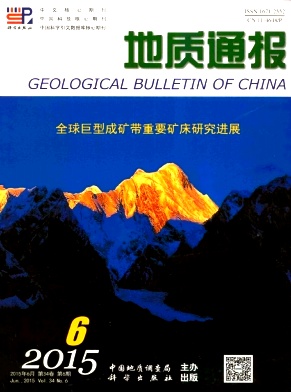WANG Ao1, ZHAO Yuanyi2, XU Hong1, CAO Chong1. The progress in the study of the Pechenga Ni-Cu sulfide deposit, Russia[J]. Geological Bulletin of China, 2015, 34(06): 1110-1118.
| Citation: |
WANG Ao1, ZHAO Yuanyi2, XU Hong1, CAO Chong1. The progress in the study of the Pechenga Ni-Cu sulfide deposit, Russia[J]. Geological Bulletin of China, 2015, 34(06): 1110-1118.
|
The progress in the study of the Pechenga Ni-Cu sulfide deposit, Russia
-
1. China University of Geosciences, Beijing 100083, China;2. MRL Key Laboratory of Metallogeny and Mineral Assessment, Institute of Mineral Resources, Chinese Academy of Geological Sciences, Beijing 100037, China
-
Abstract
Pechenga, a world-class Ni-Cu sulfide deposit, is located in the Kola Peninsula of Russia. The Kola super-deep drilling project is located right at the ore district. 25 intrusions with industrial orebodies have been found in the Pechenga district with toltal resources of 4.7 Mt Ni at 1.2% grade and 3.5 Mt Cu at 0.9% grade, and these orebodies can be assigned to east ore belt and west ore belt. Pechenga, Norilsk (Russia), Sudbury (Canada) and Jinchuan (China) are all the most famous world-class Cu-Ni sulfide deposits. The Pechenga complex consists of four sedimentary-volcanic cycles, and the orebody is within the fourth sedimentary-volcanic cycle Pilgujarvi Formation. The sedimentary-volcanic activities occurred between 1940Ma and 2500Ma, whereas the mineralization occurred in the late period volcanic activities of Pechenga between 1950Ma and 1990Ma. The mineralization of Pechenga took place later than that of Norilsk, but earlier than that of Sudbury and Jinchun. The main host rock is ferropicrite, which is characterized by high Fe and low Al2O3, high TiO2, Zr and other incompatible elements, and strong enrichment of LREE. The ferropicrite is similar to intraplate basalt and alkaline basalt in geochemical characteristics. The metallogenic model of Pechenga can be described as follows: the Pechenga intrusion derived from the branches of mantle plume intruded into rifts, and its west part reached the place above the sedimentary strata, while the east part stopped its migration within the sedimentary strata. The sulfide melt was produced by the assimilation of magmatic intrusion, and then a variety of mineralizations were formed.
-

-
-
Access History







 DownLoad:
DownLoad: